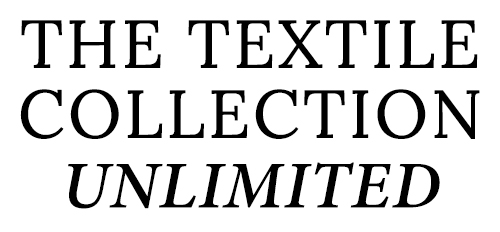Exhibitions
The Fire Birds Will Take Flight Again : The Woven Forms Of JACQUES DOUCHEZ AND NORBERTO NICOLA
Assume Vivid Astro Focus’s inaugural curatorship establishes a posthumous connection with two artists: Jacques Douchez (1921–2012) and Norberto Nicola (1930–2007). This innovative collaboration transcends time, creating a mesmerizing tapestry of entities—mystical, fertile, and ethereal—bathed in a kaleidoscope of colors. Reflected by the surrounding structure, these entities multiply and distort, inviting us into a narrative that is not bound by history or retrospection but rather dedicated to the woven works of these visionary artists.
The story unfolds in 1951 when Douchez and, three years later, Nicola, joined Atelier Abstração, a creative sanctuary founded by the Romanian artist Samson Flexor (1907–1971). Within the walls of this atelier, their friendship flourished, interweaving their lives and professional careers with the avant-garde ideals that shaped Flexor’s aesthetic. In 1959, their artistic synergy led to the establishment of Atelier Douchez-Nicola—a collaborative venture unlike any other—where both artists retained their artistic autonomy, allowing their creations to evolve independently. Nicola crafted works of lyrical, dreamlike allure, while Douchez embraced austerity and asceticism.
However, in 1980, their professional ties unraveled, and the Atelier closed its doors, forever altering their artistic trajectories. Joint exhibitions became a thing of the past. It is within this context that the exhibition project seeks to reunite these artists, presenting their works in a shared space that reignites the physical and emotional connection between them. The exhibition encompasses pieces created during the Atelier’s active years, as well as subsequent works that emerged from the intricate tapestry of their friendship. Through these pieces, a celestial vocabulary unravels, illuminating each fiber with the radiant energy of their combined artistic spirits.
THE MANIFESTO OF THE ATELIER DOUCHEZ-NICOLA
WOVEN SHAPES
We attempt to give tapestry a new creative dimension.
The tapestry we seek moves away from the traditional idea of flat repre`sentation.
We create a woven object.
Lurçat’s reform was merely a re-evaluation
of two-dimensional art, with a specific technique (weaving)
and material (wool). Now it is about creating
an art of woven fiber, freed from all bonds
with the arts of painted surfaces.
Fiber and fabric have volume with their own qualities of tension, elasticity, behavior—anyway
a place in space. Color is an attribute of matter, but withheld by it.
The woven work must model space in a multidimensional form.
Jacques Douchez and Norberto Nicola
São Paulo 1959
MADALENA SANTOS REINBOLT: A Head Full Of Planets
“Madalena Santos Reinbolt: A Head Full of Planets” marks the first comprehensive solo exhibition showcasing the remarkable work of Madalena Santos Reinbolt (1919-1977) hailing from Vitória da Conquista, BA. While her artistic repertoire also encompassed painting, Reinbolt’s renowned mastery lies in her intricate embroideries crafted with an array of vibrant threads, aptly termed “wool frames.” Within these works, Reinbolt masterfully portrayed everyday life, both rural and urban, replete with diverse black characters engaged in gatherings, festivities, religious rituals, and communal meals.
Reinbolt’s creative journey took root during her upbringing on a small family farm, where she encountered embroidery, weaving, ceramics, and painting in her formative years. In 1949, as she embarked on her adult life, Reinbolt settled in Petrópolis, working at the Samambaia farm, the residence of renowned architect Lota Macedo Soares (1910-1967) and her partner, American writer Elizabeth Bishop (1911-1979).
Although exposed to creative endeavors from an early age, it wasn’t until the 1950s that Reinbolt began wholeheartedly dedicating herself to painting. Her works during this period featured synthetic figures rendered with expressive brushstrokes, often utilizing unconventional supports like paper or straw, underscoring the significance of materiality in her artistic production.
Towards the end of the 1960s, Reinbolt embarked on her groundbreaking venture into the realm of “wool pictures,” utilizing 154 needles to intricately weave vibrant colors akin to an artist’s palette onto burlap or fabric. In this practice, the needle became an extension of her hand, akin to a painter’s brush.
Despite her rich and distinctive body of work, Reinbolt operated outside the traditional art circuits of her time, and only recently has her oeuvre garnered greater recognition. Nevertheless, museums and art spaces have been relatively silent concerning the pioneering nature of her artistic contributions. This exhibition at MASP aims to rectify this oversight, fostering dialogue around her history and profound impact on Brazilian art.
“Madalena Santos Reinbolt: A Head Full of Planets” brings together 44 artworks encompassing paintings and tapestries. Accompanying the exhibition is a dedicated editorial publication featuring unpublished images and insightful essays, providing a comprehensive exploration of the artist’s work.
This solo exhibition is part of MASP’s biennial program devoted to Brazilian Stories (2021-22), coinciding with Brazil’s bicentennial of independence in 2022. In addition to Reinbolt’s showcase, this year’s program includes individual exhibitions featuring Judith Lauand and Cinthia Marcelle. Curated by Amanda Carneiro, assistant curator at MASP, and André Mesquita, curator at MASP, this exhibition pays homage to Madalena Santos Reinbolt and her extraordinary artistic legacy.
